Last Chance to Catch NYC's Holiday Notalgia Train
We met the voices of the NYC subway on our nostalgia ride this weekend!


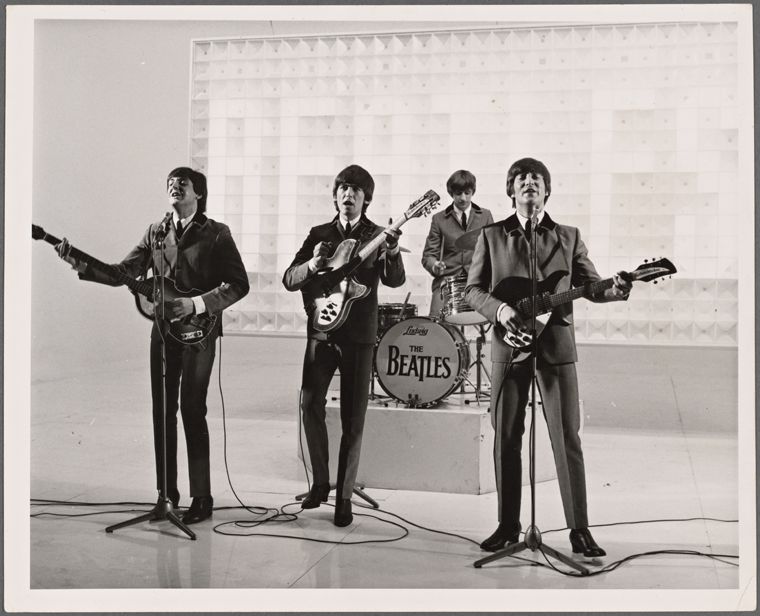
Throughout the 1960s, the Beatles left a profound mark on New York City, performing at venues such as The Ed Sullivan Theater, Forest Hills Stadium, and Shea Stadium. Fans would swarm the band wherever they went, and some would go so far as to steal some of their personal belongings. The Beatles gave a handful of performances across the city from 1964 to 1966 and continued to provide promotional material shortly after, and even after the band dissolved, the members spent considerable amounts of time in New York. John Lennon lived in New York City from the time of his marriage to Yoko Ono to his death in 1980, and the other Beatles made frequent appearances at concerts or talks. Here are 10 still-standing locations that are tied to the Beatles today.
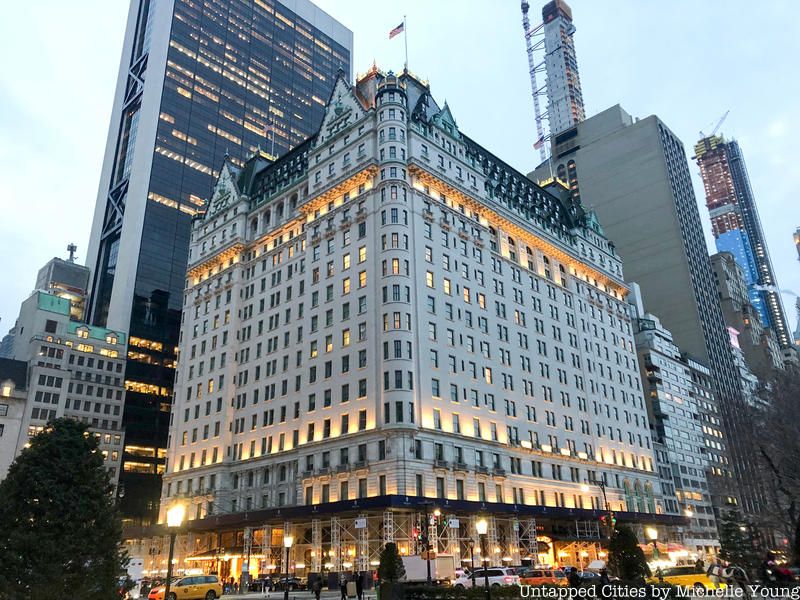
The Plaza Hotel was the first hotel the Beatles stayed at in the U.S., arriving shortly after a press conference at JFK Airport on February 7, 1964. Over 50 policemen protected the band from fans as they made their way inside. They took the 10-room Presidential suites on the 12th floor (rooms 1209 to 1216), and they would sometimes wave at fans on 58th Street from the window. Funnily enough, management at the Plaza Hotel believed they booked rooms for a group of “English businessmen,” not a rock ‘n’ roll band.
At the hotel, the Beatles watched plenty of news about themselves, as well as conducted interviews with local radio DJs. George Harrison developed strep throat and was confined to the hotel during rehearsals for their first performance. On February 10, after a chaotic few nights, Capitol Records president Alan Livingston presented the Beatles at the Plaza with gold records for “Meet the Beatles” and “I Want to Hold your hand.” A cocktail party for the press was held later that day at the hotel. But with all the commotion during their first visit, the Plaza Hotel made it clear that they did not want the Beatles to return. Instead, the Beatles would spend their subsequent visits at the Warwick Hotel.
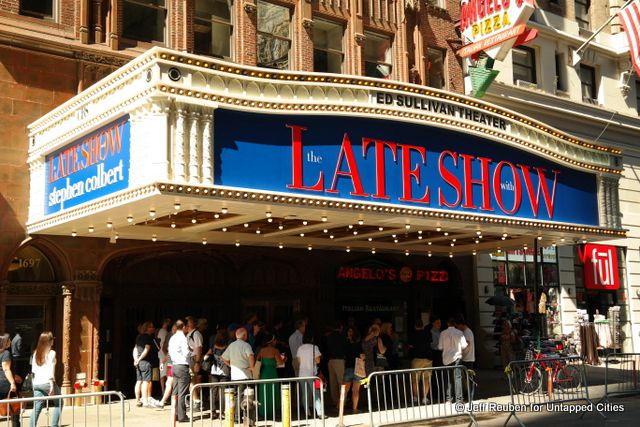
The Ed Sullivan Theater between 53rd and 54th Streets on Broadway hosted the Beatles’ debut performance in the U.S. in 1964. Their first performance on the Ed Sullivan Show attracted 73 million viewers, which further triggered the growth of Beatlemania and the broader British Invasion. The theater could only house 728 viewers, but there were over 50,000 ticket requests for the first performance. Richard Nixon’s daughters were in attendance, and the Beatles opened with “All My Loving.” Despite the broadcast’s success, some complained about the production value, including Paul McCartney who remarked later that Lennon’s microphone volume was too low.
The Beatles would return to the show a few more times that year, including twice more in February (although the February 23rd show was filmed weeks before airing). The Beatles performed there live for the last time on August 14, 1965, following three acts and performing songs such as “I Feel Fine” and “Yesterday.” Over the next few years, they would also film promotional clips of songs that would air exclusively on the show, but they would not perform live at the theater again.
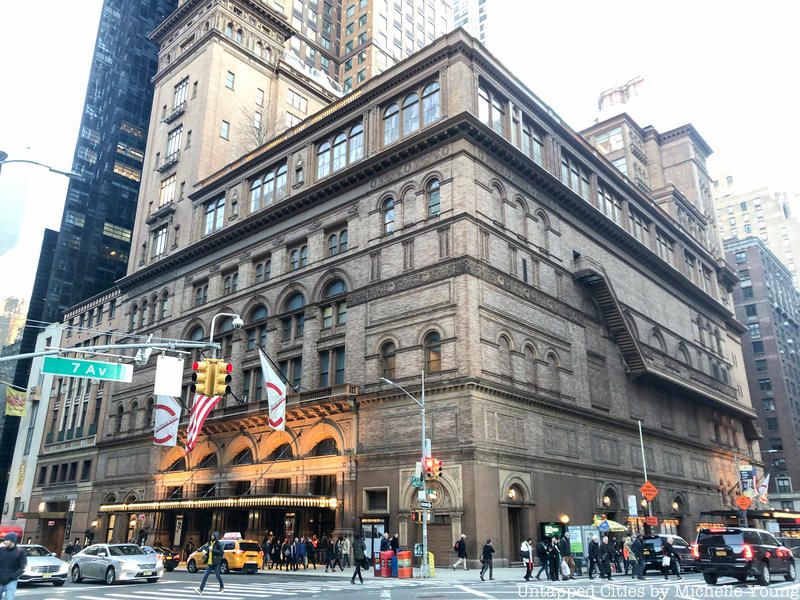
In between performances on the Ed Sullivan Show, the Beatles gave two performances at Carnegie Hall on February 12, 1964. The Beatles sold out both shows, which occurred following their short appearance in Washington, D.C. Their concert was the first time that a rock act played at Carnegie Hall, which had been reserved for classical and jazz performances. The American Federation of Musicians denied the band’s producer George Martin the rights to record the concerts for a live album, although Carnegie Hall granted permission for the band to record.
Promoter Sid Bernstein organized the Carnegie Hall concert, and it was the last concert Bernstein booked at the venue. Bernstein later said, “Carnegie Hall didn’t have to worry about its sacred property or paintings on the wall. They shook a little bit and they asked me never to come back again!” The Beatles were not impressed by the venue whatsoever, with Lennon noting that the acoustics were terrible and the concert was like a circus where they were “being pawed and talked at and met and touched.”
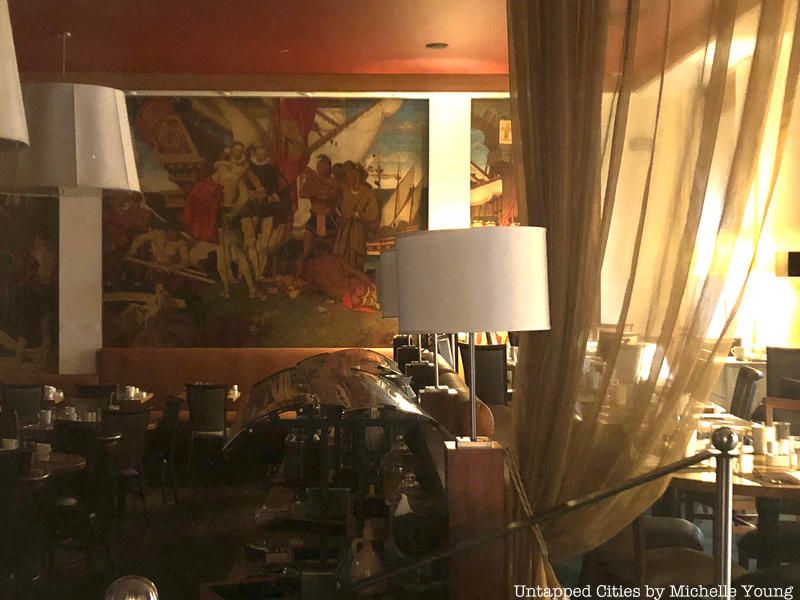
The Beatles stayed at the Warwick Hotel in 1965 and in 1966 while giving performances across the city. On August 16, 1965, the Beatles stayed inside the hotel and received visitors including Bob Dylan, the Supremes, Del Shannon, and a number of other performers.
For the 1966 performances, the Beatles gave a press conference at the Warwick on August 22 exclusively for “reporters” under 18, which included many members of their fan club. Just a week later, the Beatles gave their final paid concert ever at Candlestick Park in San Francisco.
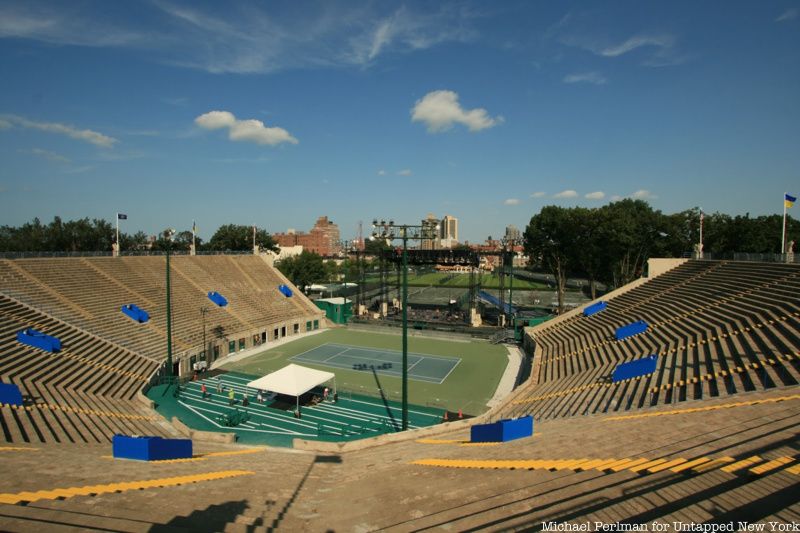
On August 28 and 29, 1964, the Beatles gave two performances at Forest Hills Stadium in Queens to 16,000 fans. After arriving at JFK Airport at 3 a.m., the Beatles were driven to the Delmonico Hotel on Park Avenue. It was alerted that a fan had pulled Ringo’s St. Christopher medal from his neck, which was later found and returned. To get to the stadium, they took a private helicopter, but the pilot did not have permission to take off. Thus, the Beatles arrived later than expected and took to the stage at 9:50 p.m.
The Beatles performed the standard 12-song set they used for the U.S. tour, including “Twist and Shout,” “She Loves You,” and “A Hard Day’s Night.” The performance was completely sold out, with extra seats added, and the audience was kept from the stage by an eight-foot barbed wire fence.
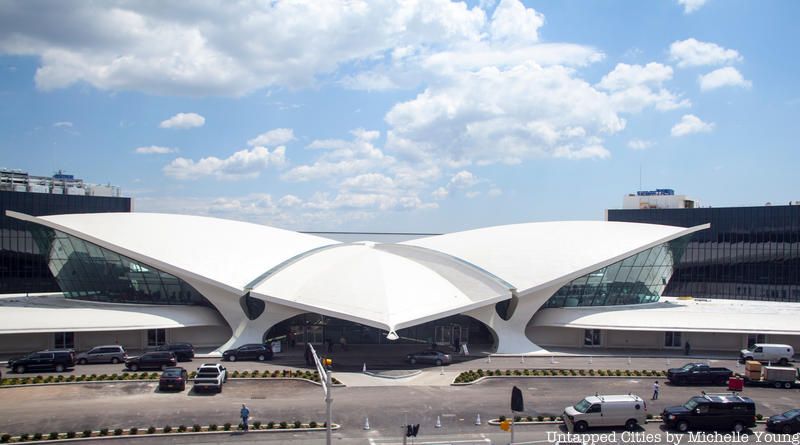
JFK Airport was the first location in New York City that the Beatles experienced. The Beatles, dressed in mod suits with pudding bowl haircuts, were greeted by over 3,000 fans. They gave a quick press conference at the airport, which dissolved some of the band’s anxiety. According to Ringo Starr in an interview shortly after arriving, “On the airplane, I FELT New York. It was like an octopus grabbing the plane… I could feel like tentacles coming up to the plane it was so exciting.”
Four decades later, Paul McCartney witnessed the 9/11 attacks from the JFK Airport tarmac. where he was waiting to take off after a visit to New York. McCartney stayed at a hotel near the airport and immediately began planning the charity Concert for New York following the attacks.
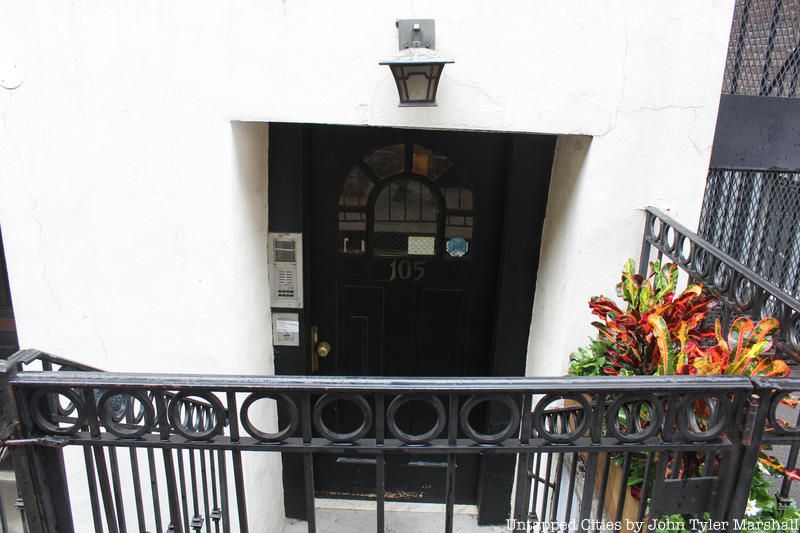
According to Village Preservation, the Beatles briefly came to Greenwich Village amid the chaos of Beatlemania during their first trip in February 1964. According to several sources, the Beatles snuck down from Midtown to Greenwich Village and headed to a coffeehouse called Improvisation, which might have been located near the coffeehouses on MacDougal Street. Although the coffeehouse no longer exists, the community’s many historic structures that the Beatles glanced at and perhaps went into during their trip remain. Today, there is a mural on the West 3rd Street facade of 125 MacDougal Street centering the Beatles in front in various colors.
After the Beatles broke up, Lennon and Ono moved to an apartment in Greenwich Village at 105 Bank Street. The apartment is located on a quiet cobblestone street, where they momentarily had an escape from the craziness of the city, but their home was shortly after robbed. The couple then moved to the Dakota.
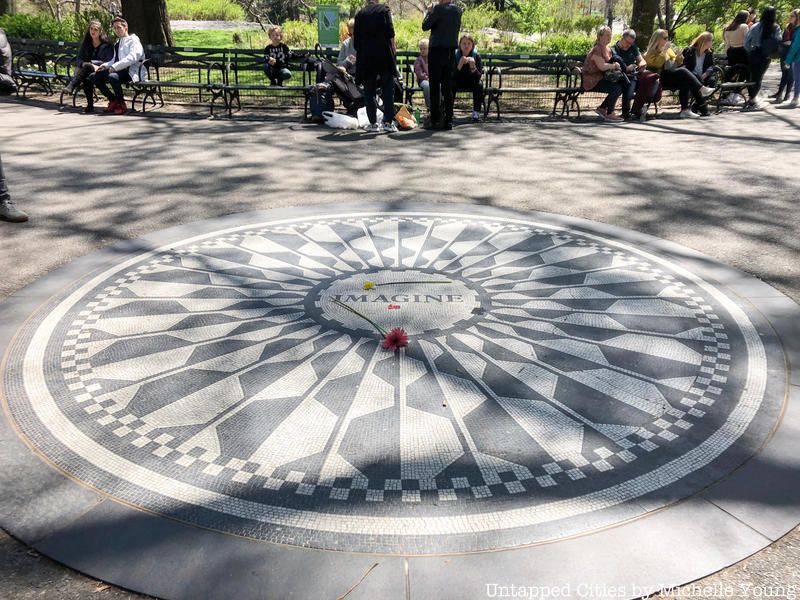
Strawberry Fields is a section of Central Park that serves as a memorial for John Lennon. Designed by landscape architect Bruce Kelly, Strawberry Fields takes its name from the Beatles hit “Strawberry Fields Forever,” the song itself named for the Liverpool children’s home Strawberry Field, where Lennon played as a child. The section of Central Park where Yoko Ono scattered Lennon’s ashes was dedicated to him in April 1981. Just a few months later, it was announced that Strawberry Fields would be renovated, and Ono took the lead in requesting that the memorial be rebuilt as a “living memorial” and not just a statue.
The memorial itself is typically covered with flowers and other belongings left by Lennon’s fans. At Imagine Circle, people pay tribute to the legendary musician on his birthday and death date, as well as celebrations for the birthdays of other Beatles members. Imagine Circle was also the site of numerous memorial events following 9/11. The “Imagine” mosaic is based on a Greco-Roman design and was inspired by Lennon’s most famous song of the same name. While die-hard Beatles fans continue to visit the site, perhaps the most famous visitor was Gary dos Santos, who installed flower designs around the mosaic and was deemed the “Mayor of Strawberry Fields,” visiting the memorial daily for almost two decades.
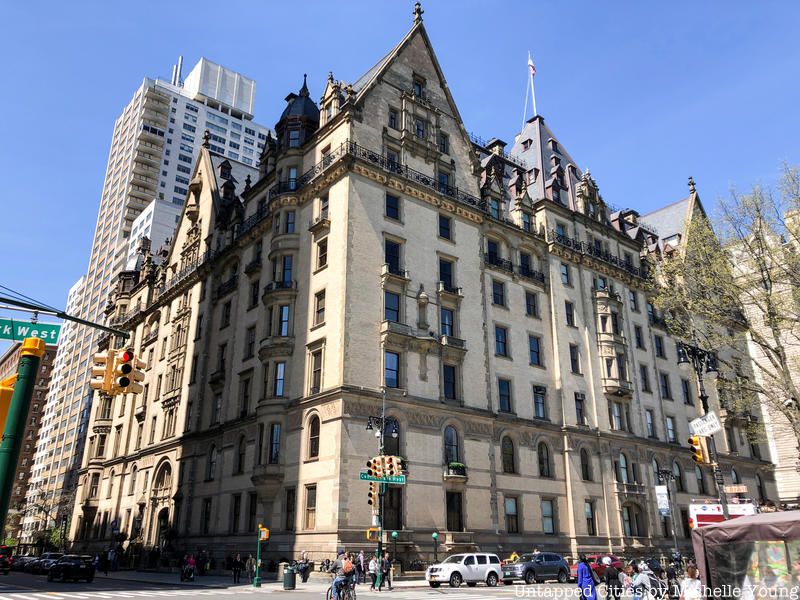
Perhaps the New York site all Beatles fans associate with John Lennon is the Dakota, where he lived from 1973 until his assassination in 1980 right outside in the archway. Mark David Chapman planned the killing for several months, waiting for Lennon on the morning of December 8. Lennon signed Chapman’s copy of the album Double Fantasy before leaving for a recording session. When Lennon and Ono returned that night, Chapman fired five bullets at Lennon, then proceeded to read The Catcher in the Rye outside the Dakota until police arrested him.
The Dakota was constructed between 1880 and 1884 and was designed by Henry Janeway Hardernburgh, who built many skyscrapers and hotels in Manhattan. The Dakota originally had 65 apartments, ranging from four to 20 rooms, with apartments arranged in the French style. The Dakota was well ahead of its time, with electricity provided by an in-house power plant, central heating, and dumbwaiters connected to every apartment.
The Dakota still holds on to the history of the tragedy. Yoko Ono still lives at the Dakota and lights a candle in the window of Lennon’s room every December 8th. In 2018, Ono created the artwork “Sky” at the 72nd Street subway station right outside the Dakota in Lennon’s memory. In June 2016, Jay Hastings, the Dakota doorman who assisted Lennon on that night, sold the shirt he was wearing that had stains of Lennon’s blood.
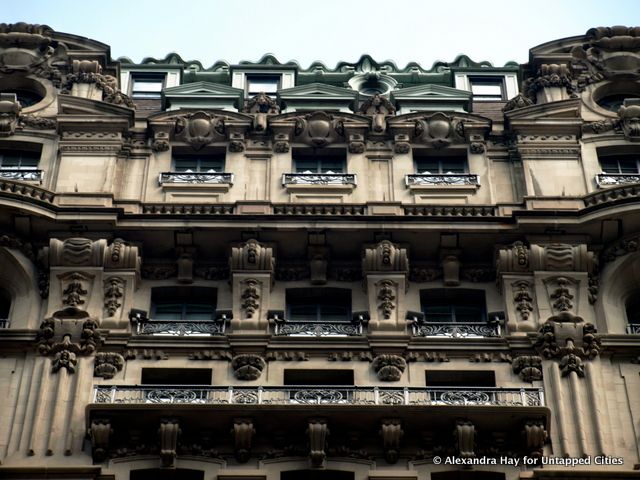
The St. Regis Hotel is where Lennon and Yoko Ono first resided after getting married in 1969. The couple did the now-famous interview at St. Regis that was printed in Penthouse Magazine four years after Lennon’s death. The interview was intended as background for the book Apple to the Core: The Unmaking of the Beatles about the Beatles breakup by Peter McCabe and Robert Schonfeld. The former Beatle found an escape from the bustling city at the hotel.
Next, check out 8 Haunts of John Lennon in NYC!
Subscribe to our newsletter